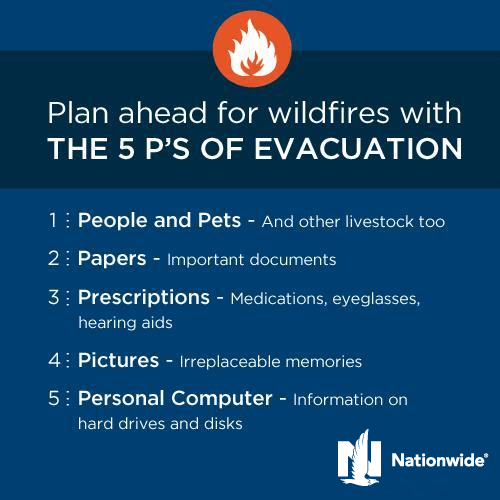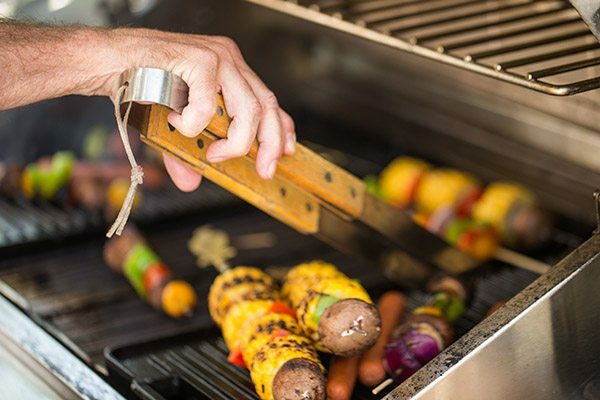
You don’t have to live near a canyon or forest for your property to be threatened by wildfire. Nearly 1/3 of U.S. homes are in wildfire-prone areas, according to the Insurance Institute for Business and Home Safety (IBHS).[1]
The impact of a wildfire can be tragic and expensive. For instance, according to the National Fire Protection Association, AccuWeather has predicted the costs for the 2020 wildfire season could total between $130 and $150 billion.[2]
Key to lessening the damage to homes and businesses is knowledge and preparation.
Where do wildfire occur?
Wildfires can, and do, happen in every state. Insurance Information Institute reported in top states in 2019 that face a “high to extreme risk” of wildfires.[3]
- Arizona
- California
- Colorado
- Idaho
- Montana
- Oklahoma
- Oregon
- Texas
- Utah
- Washington
When is wildfire season?
Wildfire season is not confined to one time of the year or one region of the country. For instance:
- Early spring: Wildfire season typically begins in Texas and moves across the Southeast to Florida before hitting the Northeast.
- Late spring: The Southwest
- Mid- to late-summer: Pacific Northwest and Northern California.
- Fall: Southern California. A secondary fire season also hits the East and Southeast as leaves begin to fall.
Do you live in a wildfire-prone area? If you’re unsure, pay attention to news media reports and find an active wildfire map.
How families can prepare
Residents should create and practice an evacuation plan that includes an agreed-upon meeting spot, a list of who will be notified about your evacuation and where you’ll get fire updates.
The Arizona Emergency Information Network’s wildfire evacuation guide offers these tips:
Know the 5 P’s of wildfire evacuation
- People and pets
- Papers and important documents
- Prescriptions
- Pictures and irreplaceable memories
- Personal computers
How to prepare your home
- Move flammable furniture to the center of the home
- Close shutters, blinds and heavy drapes
- Close fireplace dampers and screens
- Shut all interior and exterior doors, and leave them unlocked
- Put a note on the front door with names of all evacuees, time and date of evacuation, the intended destination and contact information
- Place a ladder outside for access to the roof
Use these additional tips to prepare your home for a wildfire.
How businesses can prepare
IBHS suggests local businesses prepare a business continuity plan to deal with the potential effects of wildfires and offers a free toolkit to help with disaster recovery.
The organization also recommends:
- Keeping debris and combustible material from accumulating on roofs, gutters and around the structure
- Enclosing the bottom of elevated decks, and not storing combustible materials below the deck
- Covering attic and crawl space vents with metal mesh screens to reduce entry points for wind-driven embers
- Creating defensible space up to 100 feet from the structures that serves as a layer of protection between the business and wildfire
Have a disaster kit ready
Homes and businesses should also have an emergency disaster kit, containing at the minimum:
- First aid supplies
- Emergency tools
- Medications
- Battery-powered radio
- Flashlight and extra batteries
- Car keys
- Cash and credit cards
- Water
- Non-perishable food
- Blankets or sleeping bags
Communities in wildfire-prone areas need to be prepared. Following this guide can help protect your family, home or business from a wildfire.
[1] IBHS
[2] National Fire Protection Association
[3] Facts and Statistics Wildfires



